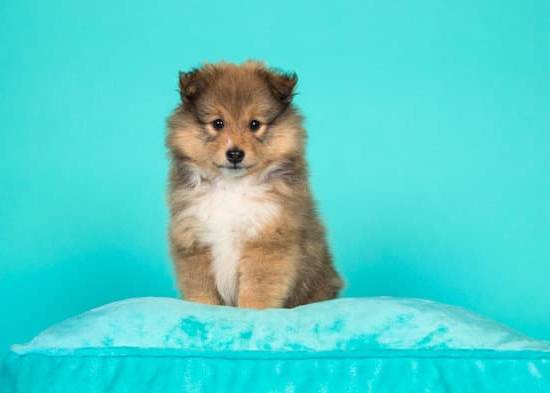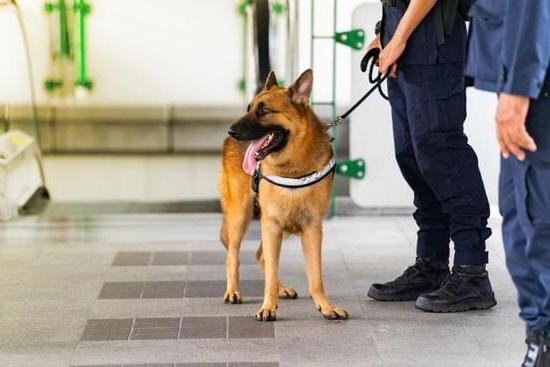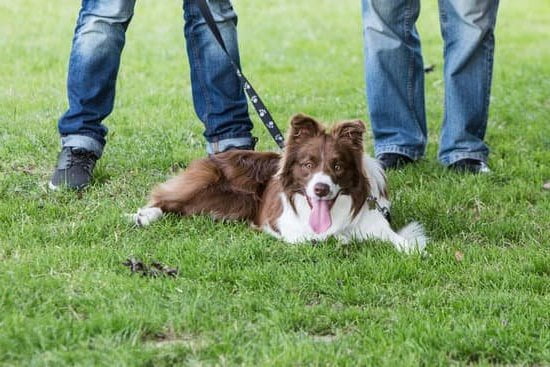Crate training is a valuable tool for dog owners looking to provide their furry companions with a safe and secure space of their own. In this article, we will explore how to train your dog to be in a crate effectively. Crate training offers numerous benefits, including aiding in house training, preventing destructive behavior, and providing a sense of security for your pet.
When it comes to crate training, selecting the right crate for your dog is crucial. We will delve into the different types of crates available and offer guidance on choosing the most suitable option based on your dog’s size and needs. Additionally, we will discuss how to set up the crate in your home, from finding the optimal location to making it cozy and inviting for your furry friend.
Introducing your dog to the crate may seem daunting at first, but with the right techniques, it can be a smooth process. From teaching basic commands like “go to your crate” to gradually increasing the time spent in the crate, we will cover all aspects of introducing your dog to this new environment. Stay tuned as we provide valuable insights on crate training that will benefit both you and your beloved pet.
Choosing the Right Crate
When it comes to crate training your dog, choosing the right crate is a crucial step in ensuring the process goes smoothly. There are several types of crates available on the market, each with its own advantages and considerations. It’s important to select a crate that will not only provide a safe and comfortable space for your dog but also meet their specific needs.
Types of Crates
One popular type of crate is the wire crate, which provides good ventilation and visibility for both you and your dog. Plastic crates, on the other hand, offer more privacy and a cozy den-like environment for dogs who prefer enclosed spaces. Soft-sided crates are lightweight and portable, making them convenient for travel or outings.
Size Matters
When choosing a crate for your dog, make sure to select one that allows them to stand up, turn around, and lie down comfortably. The crate should be big enough to accommodate your dog’s size but not so large that it becomes an area where they can eliminate without consequences.
Additional Considerations
Consider your dog’s temperament and behavior when selecting a crate. For dogs who may try to escape or chew their way out, a heavy-duty or collapsible metal crate may be more appropriate. Some crates come with dividers that allow you to adjust the size as your puppy grows, providing a cost-effective option for training from puppyhood into adulthood.
By carefully assessing your dog’s needs and considering factors such as size, material, and design, you can choose the right crate that will help create a positive experience for your furry friend during training sessions on how to train dog to be in crate.
Setting Up the Crate
When it comes to crate training your dog, setting up the crate in the right location within your home can make a significant difference in the success of the training process. The ideal placement for your dog’s crate is in a quiet, low-traffic area where they can have some privacy and feel safe.
Avoid placing the crate near drafty areas, direct sunlight, or next to loud appliances that could startle your furry friend. It is important to create a calm and relaxing environment around the crate to encourage positive associations with being inside it.
To make the crate a comfortable and inviting space for your dog, consider adding some cozy bedding or blankets inside. This will provide a soft surface for them to rest on while also creating a sense of warmth and security. Make sure that the bedding is washable and easy to clean in case of any accidents or spills.
You can also place some of your dog’s favorite toys or treats inside the crate to entice them to go in voluntarily. By making the crate an appealing and comfortable space, you can help your dog see it as their own little den where they can relax and unwind.
Additionally, consider covering the top and sides of the crate with a blanket or cloth to create a den-like atmosphere. This can help reduce visual stimulation from outside distractions and create a sense of coziness for your pet. Dogs are den animals by nature, so providing them with this kind of enclosed space can help alleviate any anxiety they may feel about being confined.
Remember to always leave the door of the crate open initially so that your dog can explore it freely without feeling trapped. With patience, consistency, and positive reinforcement, you can successfully train your dog to view their crate as a safe haven rather than a source of stress or confinement.
Introduction to the Crate
Crate training is an essential aspect of raising a well-behaved and obedient dog. Introducing your furry friend to a crate may seem daunting at first, but with patience, consistency, and the right techniques, it can be a smooth process. In this section, we will explore some effective ways to get your dog accustomed to the crate and create positive associations with it.
Creating a Positive Environment
To begin crate training, it is crucial to make the crate a welcoming and safe space for your dog. Place comfortable bedding inside the crate along with some favorite toys or treats. Additionally, consider covering the crate with a blanket to create a den-like atmosphere that feels cozy and secure for your pup. By creating a positive environment within the crate, your dog will be more inclined to enter willingly.
Association With Positive Experiences
One of the key aspects of successful crate training is associating the crate with positive experiences. Start by leaving the door of the crate open and placing treats or toys inside for your dog to discover on their own.
Encourage them to explore the crate at their own pace without any pressure or force. By allowing your dog to associate the crate with pleasant things like tasty treats or fun playtime, they will gradually build a positive connection with their new space.
Gradual Introduction
When introducing your dog to the crate for the first time, do not rush the process. Begin by leaving the door open and letting your dog explore at their leisure. As they become more comfortable being around and inside the crate, you can start closing the door for short periods while you are present in sight.
Gradually increase the amount of time they spend in the closed crate while providing praise and rewards for calm behavior. Remember, patience is key when training your dog to be in a crate successfully.
Training Commands
When it comes to crate training your dog, teaching them specific commands can make the process much smoother and more effective. Two essential commands to focus on are “go to your crate” and “stay.” These commands will not only help your dog become comfortable with the crate but also enable you to have better control over their behavior when needed.
To start training your dog to go to their crate, you can use treats or a favorite toy to lure them into the crate. Stand near the crate and say the command “go to your crate” in a firm but encouraging tone. Once your dog enters the crate, reward them with praise and a treat. Repeat this process several times until your dog understands what is expected of them when they hear the command.
Once your dog is comfortable going into their crate on command, you can begin working on the “stay” command. This command is crucial for keeping your dog in the crate for extended periods without them getting anxious or trying to leave prematurely. Start by having your dog enter the crate and then saying “stay” while holding out your hand in a stop gesture.
If your dog tries to leave, gently guide them back into the crate and repeat the command until they stay put for a few seconds. Gradually increase the duration of time they stay in the crate before rewarding them with praise and treats.
| Command | Description |
|---|---|
| Go to Your Crate | This command teaches your dog to enter their crate when instructed, making it easier for you during training or when you need them in a safe space. |
| Stay | The “stay” command helps keep your dog inside their crate for longer periods without anxiety or restlessness. |
Gradual Training Process
Crate training is an essential aspect of a dog’s education and can greatly benefit both the pet and the owner. To achieve success in crate training, it is crucial to follow a gradual training process that allows your dog to acclimate to being in the crate for extended periods. One of the keys to this process is patience and consistency.
To start the gradual training process, introduce your dog to the crate slowly by leaving the door open and allowing your furry friend to explore it at their own pace. Place treats or a favorite toy inside the crate to create a positive association with the space. Encourage your dog to go inside voluntarily by using verbal cues like “crate” or “go to bed”.
Once your dog appears comfortable with going in and out of the crate willingly, gradually start closing the door for short periods while you are still in sight. Stay nearby so that your presence provides reassurance. Extend the time with each session, always keeping an eye on how your dog reacts.
If there are signs of distress or anxiety, take a step back and decrease the duration before trying again. Remember, each dog is unique, so adjust the training process according to your pet’s needs and progress.
| Aspect | Recommendation |
|---|---|
| Introduce Crate Slowly | Allow dog to explore with door open |
| Use Positive Reinforcement | Offer treats or toys inside crate |
| Monitor Progress Closely | Extend time in crate gradually; adjust as needed |
By following these step-by-step instructions on gradually increasing the time spent in the crate, you can help your dog feel more comfortable and secure in their new space. Remember that patience, encouragement, and positive reinforcement play significant roles in successful crate training. With dedication and consistency, you can teach your dog how to be in their crate comfortably for longer periods without any stress or anxiety.
Dealing With Separation Anxiety
One effective way to address separation anxiety in crate training is to gradually increase the amount of time your dog spends in the crate when you’re away. Start by leaving your dog in the crate for short periods of time while you are still at home, gradually working up to longer durations. This will help your dog become more accustomed to being alone in the crate and reduce their anxiety when you leave the house.
Additionally, providing your dog with comfort items such as a favorite toy or blanket can help them feel more secure in the crate. Make sure to also leave some treats or puzzle toys for them to enjoy while you’re away, as this can help distract them and keep them occupied. Creating a positive association with the crate through rewards and praise when they enter it voluntarily can also make them feel more comfortable and relaxed in their confined space.
To further alleviate separation anxiety during crate training, consider leaving a piece of clothing with your scent on it in the crate. Your smell can provide comfort and reassurance to your dog while you’re away. Remember that consistency is key when dealing with separation anxiety, so be patient and persistent with your training efforts. With time and proper techniques, you can help your dog feel secure and calm in their crate even when you’re not around.
- Gradually increase time spent in the crate
- Provide comfort items like toys or blankets
- Leave treats or puzzle toys for distraction
Troubleshooting Common Issues
When training your dog to be in a crate, you may encounter common issues such as whining, barking, and reluctance to enter the crate. It is important to address these challenges effectively to ensure a positive crate training experience for your furry friend. Here are some tips for troubleshooting these common issues:
1. Whining: Dogs may whine when placed in a crate if they feel scared, anxious, or simply want attention. To address this behavior, it is essential to remain calm and patient. Avoid giving in to their demands by letting them out of the crate immediately when they whine. Instead, wait for a moment of quiet before opening the door to reinforce that quiet behavior is rewarded.
2. Barking: Excessive barking in the crate can be disruptive and stressful for both you and your dog. To discourage barking, try teaching your dog a “quiet” command while outside of the crate. When they bark in the crate, use this command and reward them with treats or praise when they stop barking. Consistency is key in reinforcing this behavior.
3. Reluctance to Enter the Crate: Some dogs may show reluctance to enter the crate initially due to fear or unfamiliarity with the space. To help your dog feel more comfortable, place their favorite toys or treats inside the crate to create a positive association. Gradually increase their time spent inside the crate while providing reassurance and positive reinforcement.
By addressing these common issues with patience and consistency, you can help your dog become more comfortable with being in a crate. Remember that every dog is unique, so it may take time and effort to find what works best for your furry companion. With dedication and positive reinforcement techniques, you can successfully train your dog to enjoy spending time in their crate.
Positive Reinforcement Techniques
In conclusion, crate training can be a valuable tool in helping your dog feel safe and secure while also aiding in behavior management. By following the steps outlined in this guide on how to train a dog to be in a crate, you can establish a positive association with the crate for your furry friend. Remember, patience and consistency are key when implementing crate training techniques.
Positive reinforcement is crucial in reinforcing good behavior and creating a harmonious relationship between you and your dog. Rewarding your pup with treats, praise, or playtime when they exhibit the desired actions such as entering the crate willingly or staying calmly inside can go a long way in making crate training successful. Consistency in using positive reinforcement techniques will help your dog understand what behaviors are expected of them.
If you encounter any challenges during the crate training process, remember to stay calm and patient. Addressing issues such as whining, barking, or separation anxiety may take time and persistence. It’s important to adapt to your dog’s individual needs and provide reassurance while gradually increasing their comfort level in the crate. With dedication and practice, you can effectively train your dog to see the crate as a secure and cozy space they willingly retreat to for relaxation.
Frequently Asked Questions
How Do I Get My Dog to Stay in His Crate?
One way to get your dog to stay in his crate is by making it a positive and comfortable space for him. Ensure that the crate is the right size, add cozy bedding, and give him treats or toys when he goes inside. Consistency with training and positive reinforcement can help encourage your dog to stay in his crate willingly.
How Long Does It Take to Crate Train a Dog?
The time it takes to crate train a dog can vary depending on the individual dog and how consistent you are with the training. Some dogs may take just a few days to get used to being in a crate, while others may take weeks.
It’s important to be patient, consistent, and not rush the process to ensure successful crate training.
How Do I Get My Puppy to Stop Crying in His Crate?
To help your puppy stop crying in his crate, it’s essential to make sure he feels safe and comfortable inside. Begin by gradually introducing him to the crate during the day with short periods of time spent inside. Provide him with food, water, toys, and comforting items like blankets or clothing with your scent.
Avoid responding directly to his cries unless it’s absolutely necessary for his well-being. Over time, as he becomes more accustomed to being in the crate, he should cry less frequently.

Welcome to the blog! I am a professional dog trainer and have been working with dogs for many years. In this blog, I will be discussing various topics related to dog training, including tips, tricks, and advice. I hope you find this information helpful and informative. Thanks for reading!





